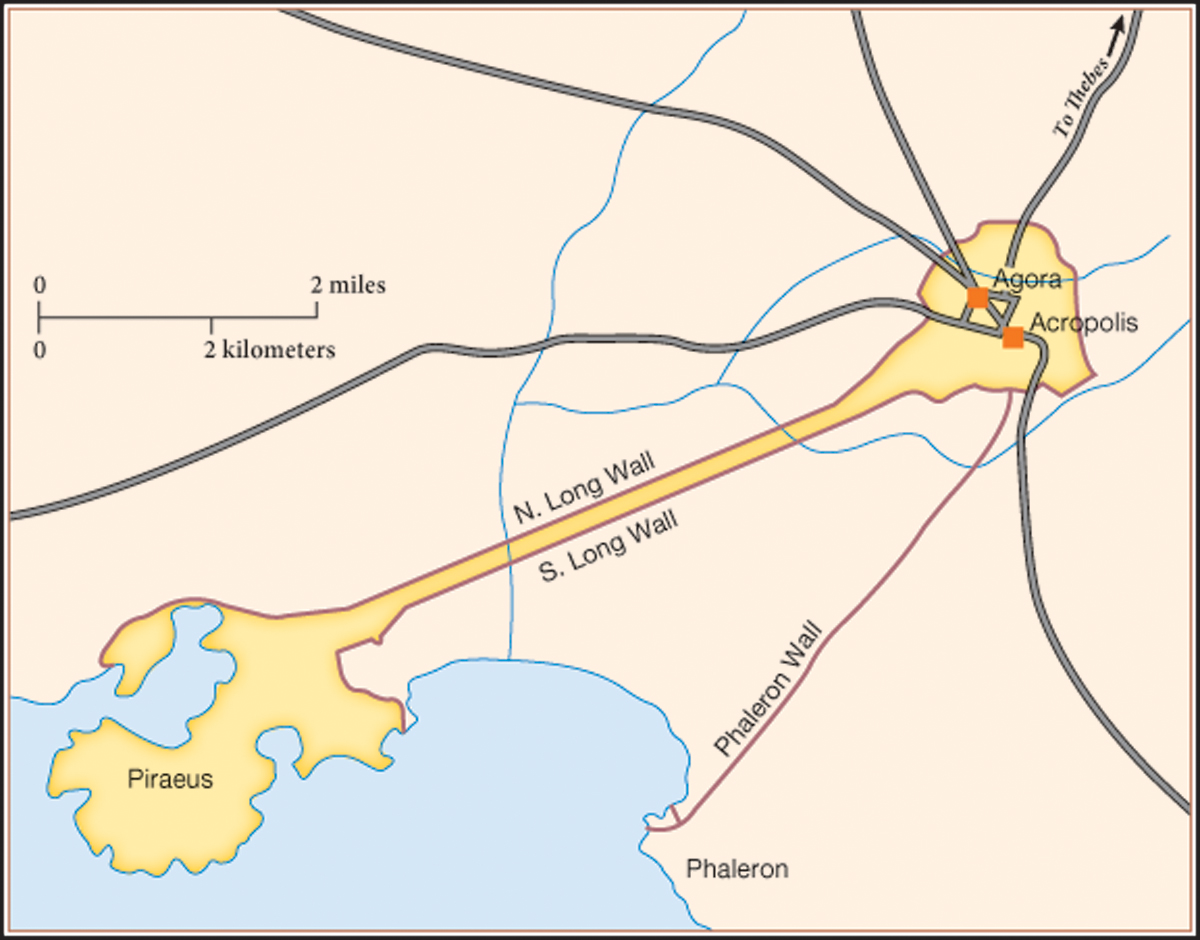
MAP 3.2 Fifth-Century B.C.E. Athens
The urban center of Athens, with the agora and acropolis at its heart, measured about one square mile; it was surrounded by a stone wall with a circuit of some four miles. Gates guarded by towers and various smaller entries allowed traffic in and out of the city. Much of the Athenian population lived in the many demes (villages) of the surrounding countryside. Most of the city’s water supply came from wells and springs inside the walls, but, unlike some Greek cities, Athens also had water piped in from outside. The Long Walls provided a protected corridor connecting the city to its harbor at Piraeus, where the Athenian navy was anchored and grain was imported to feed the people.